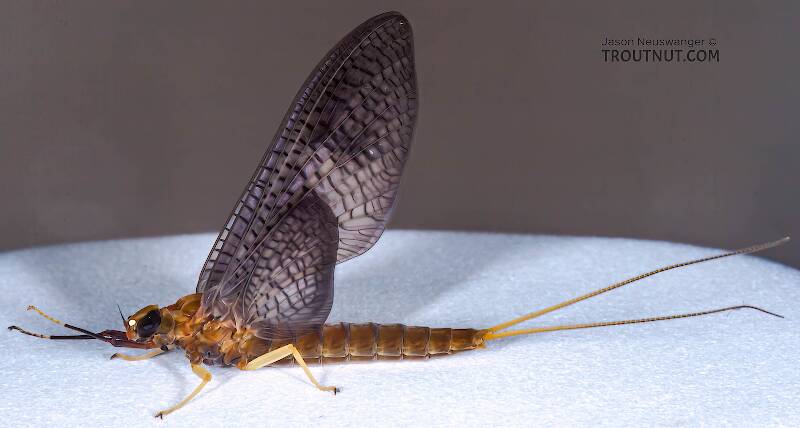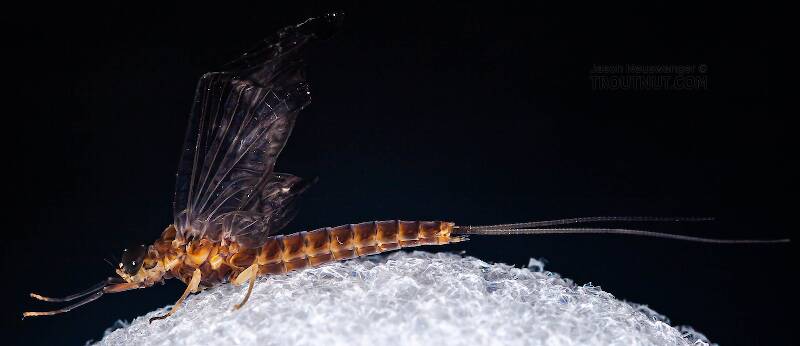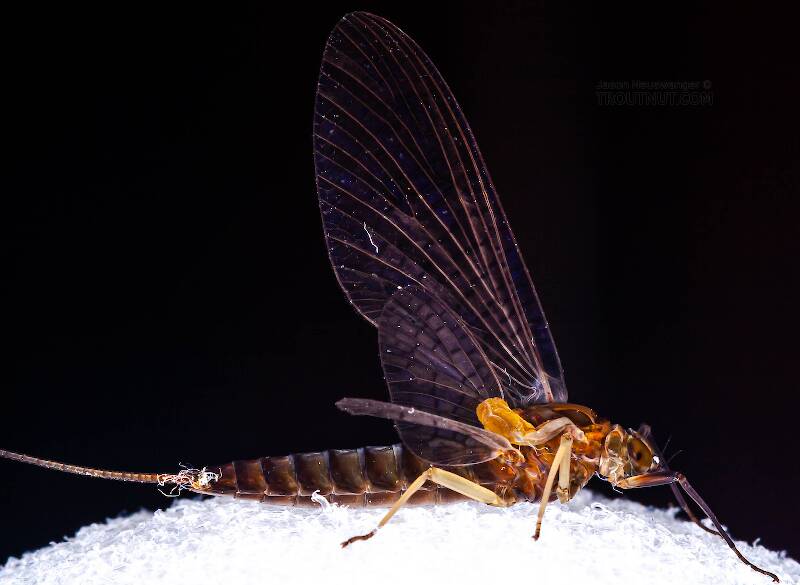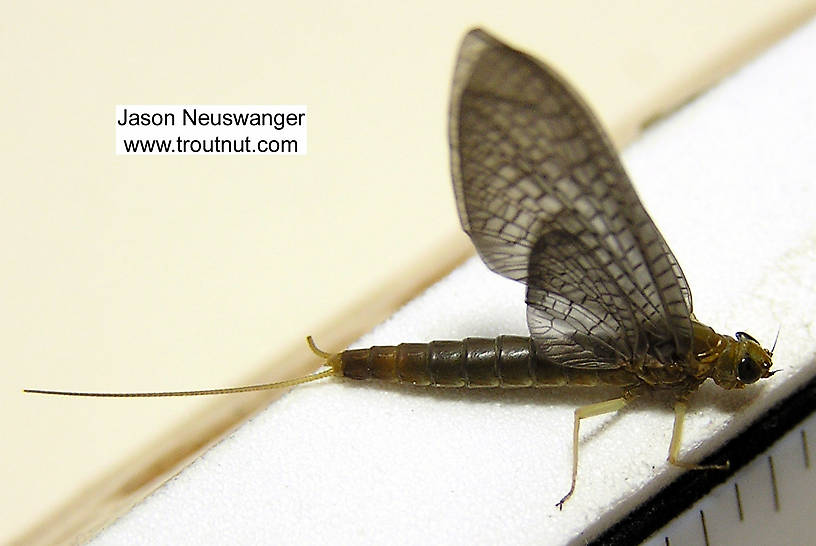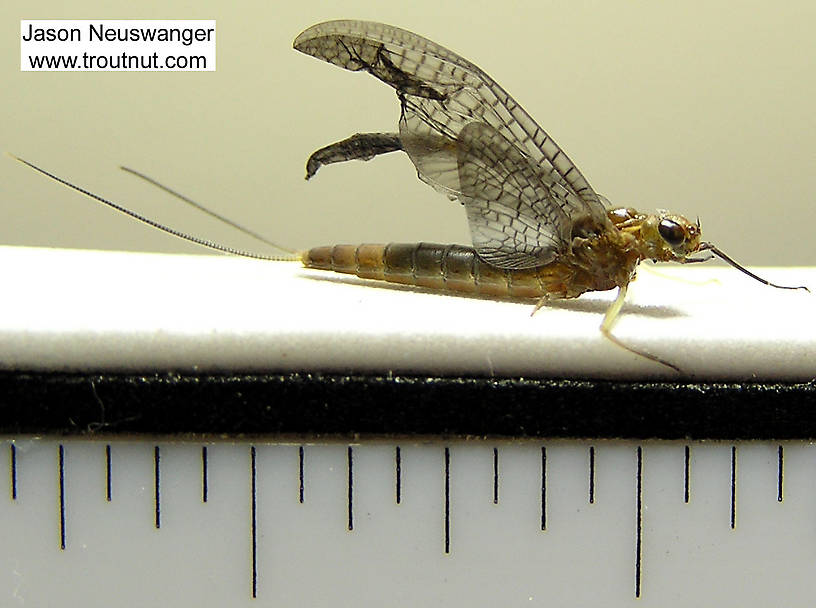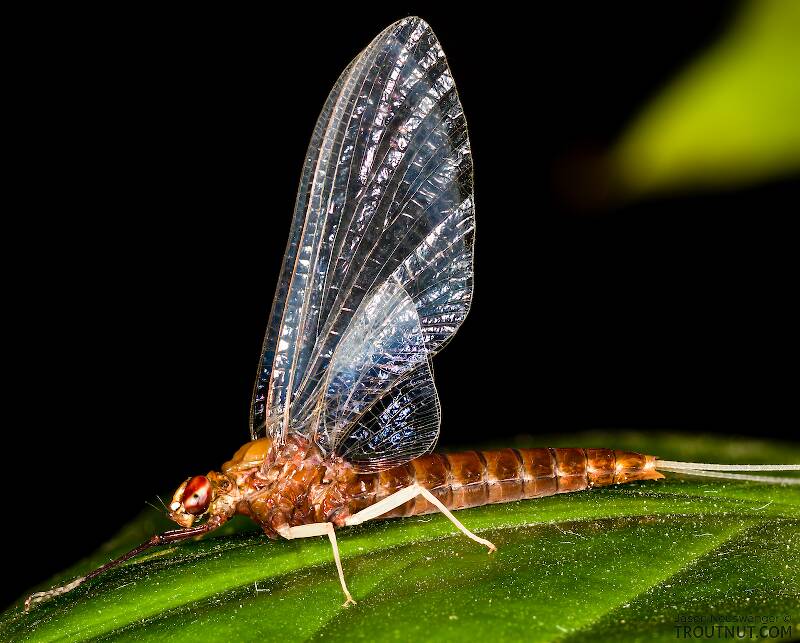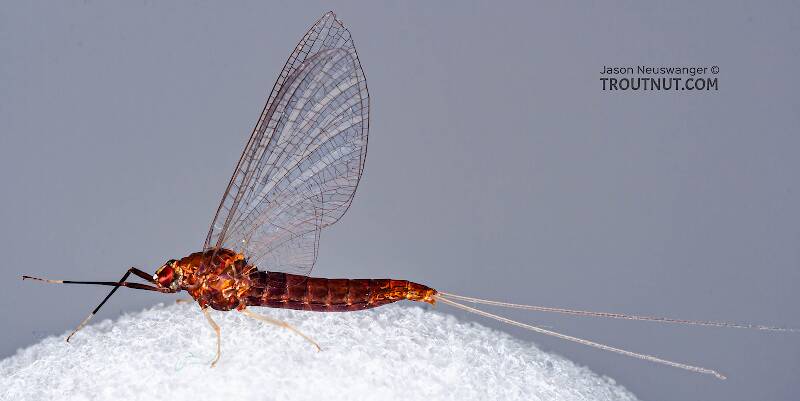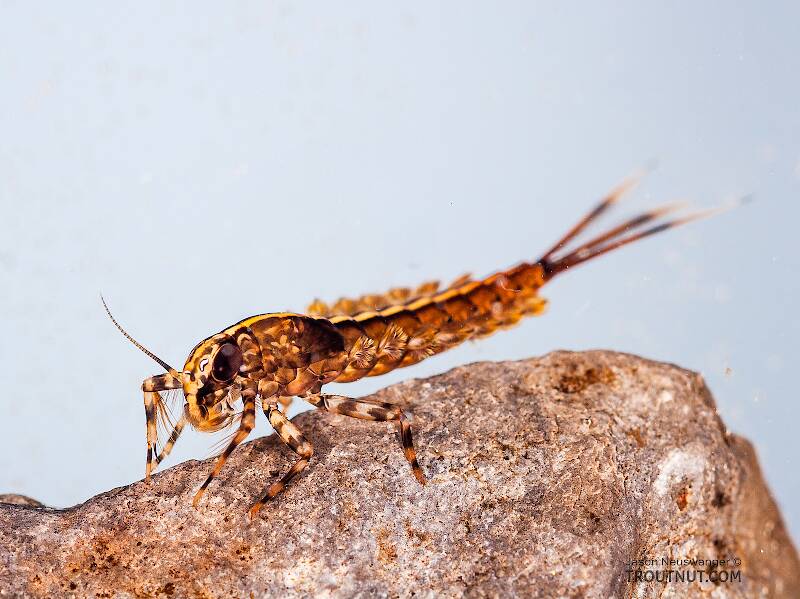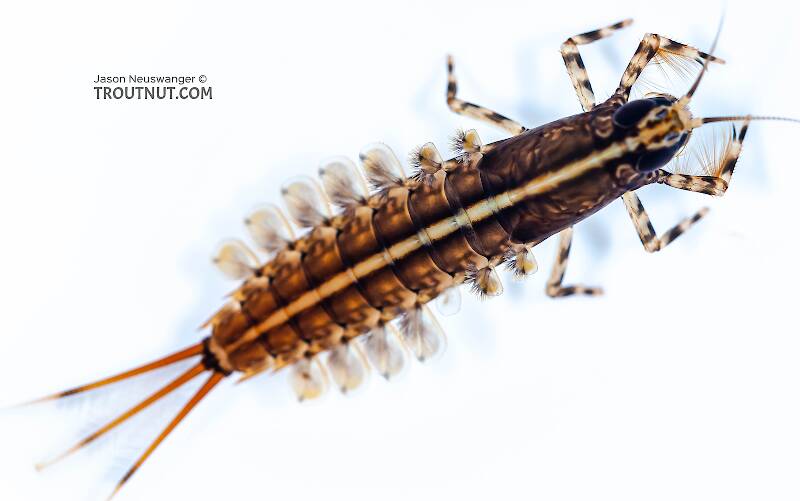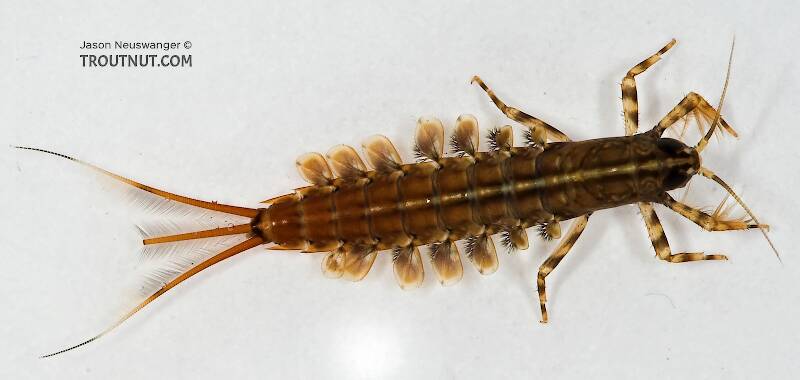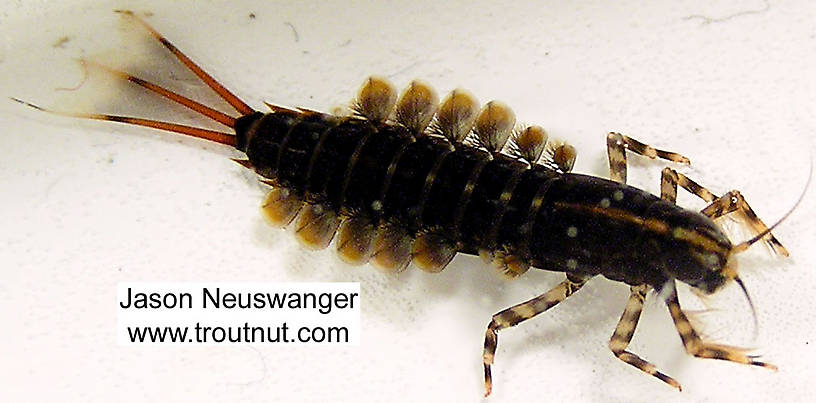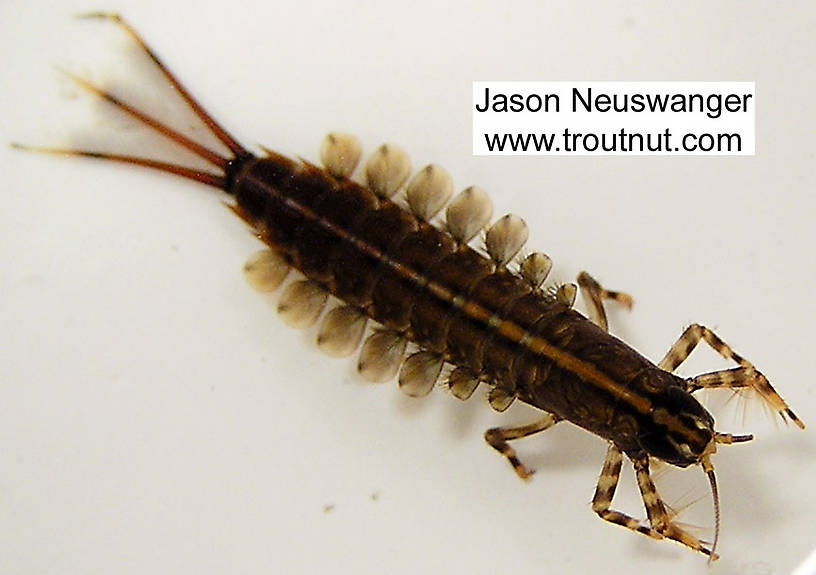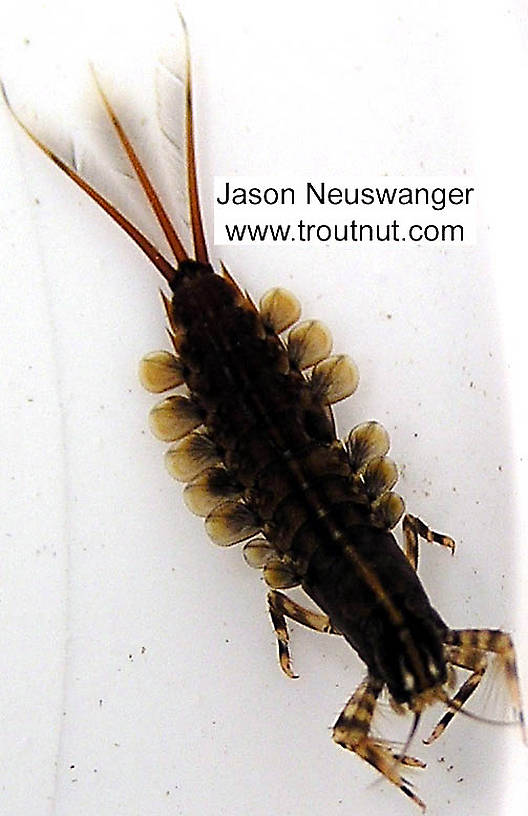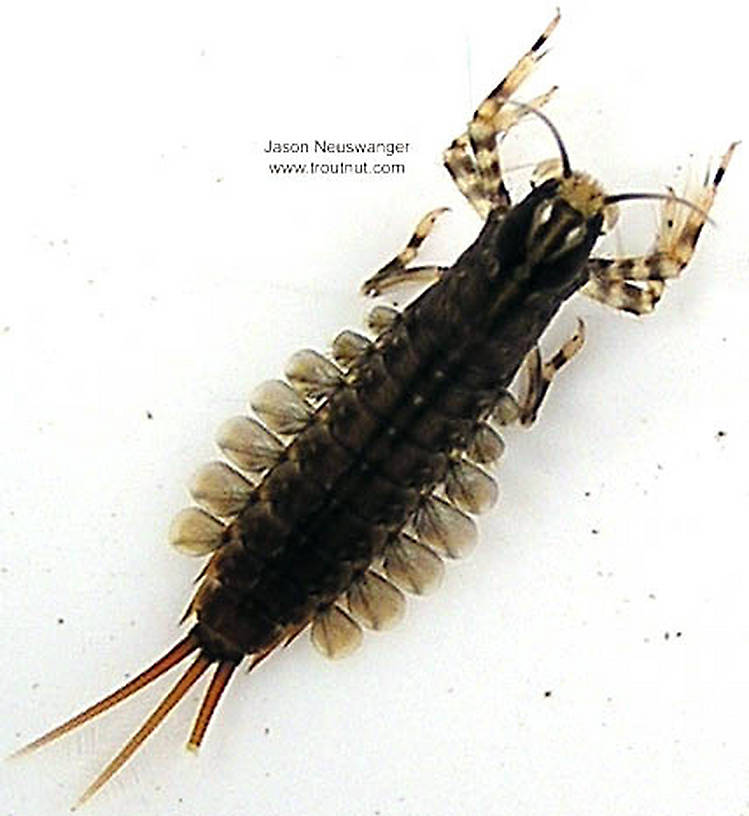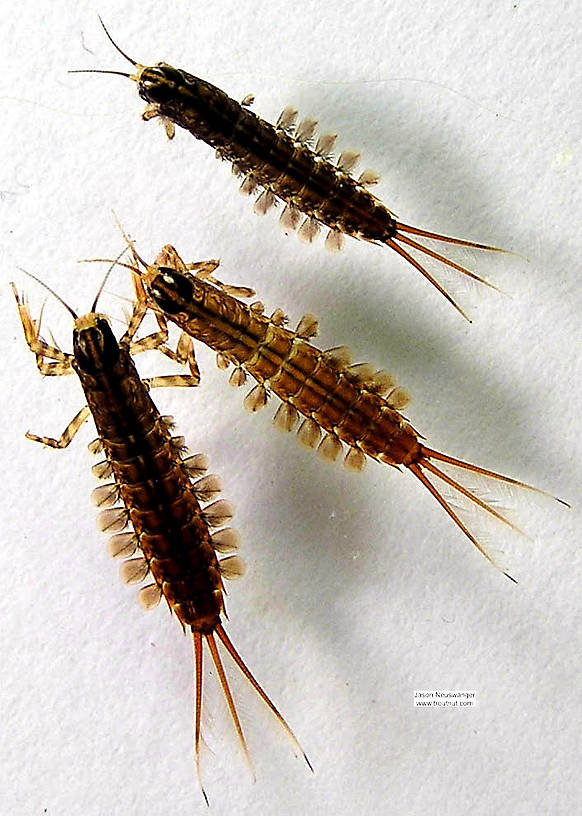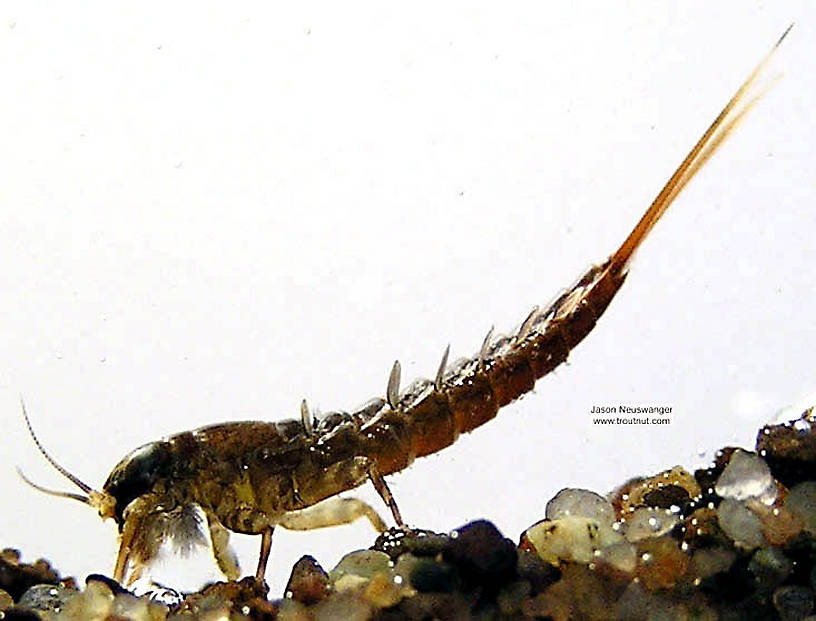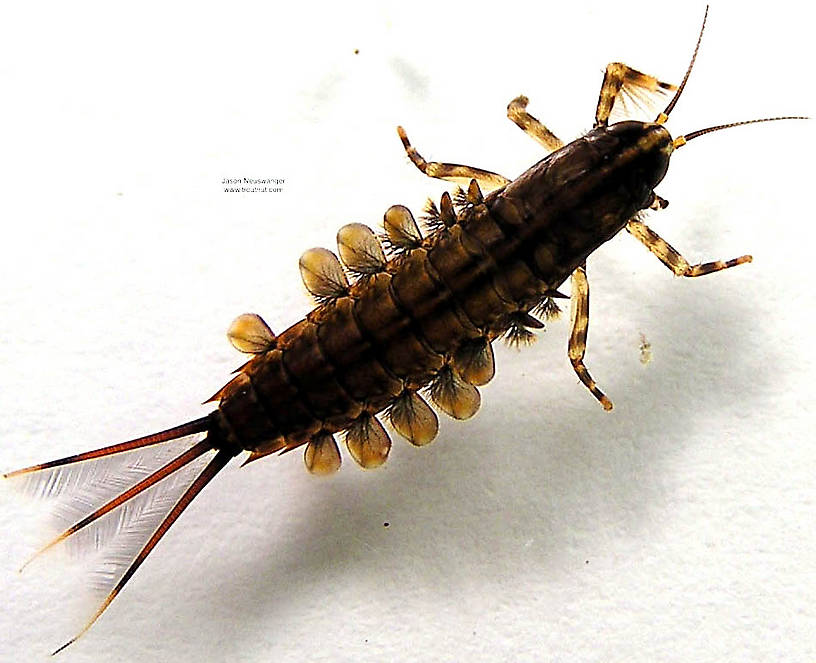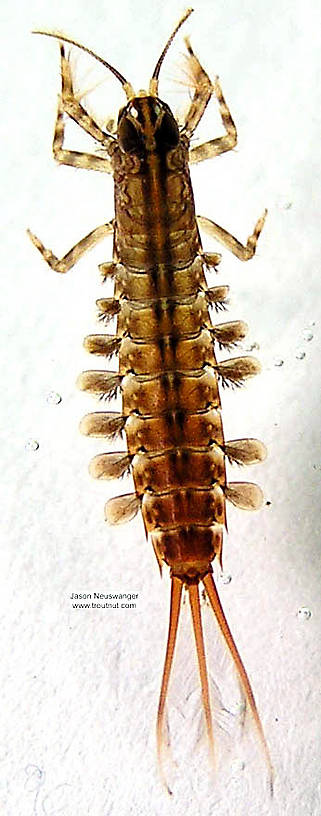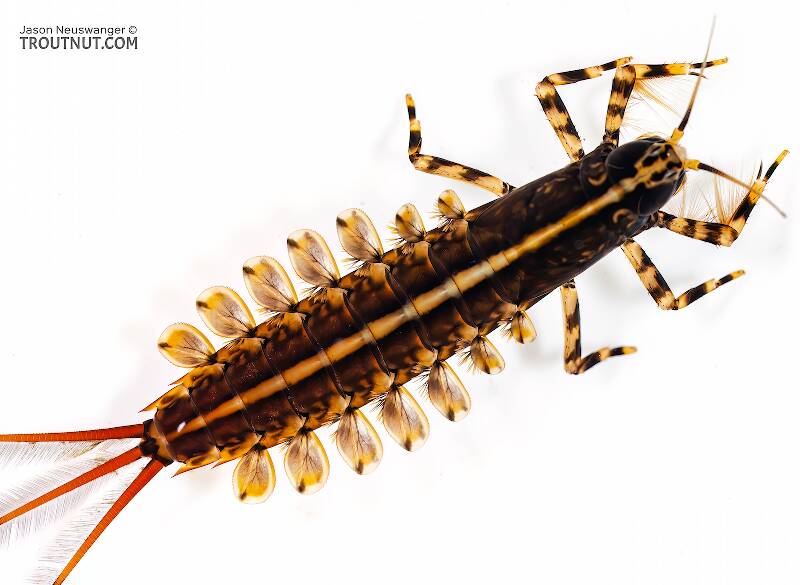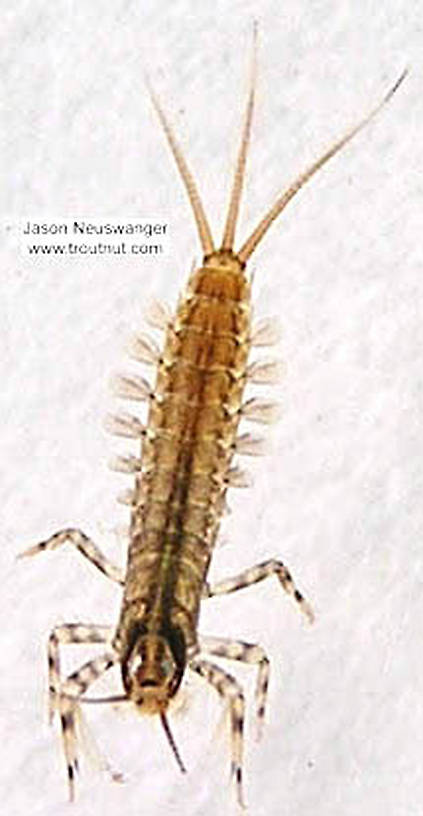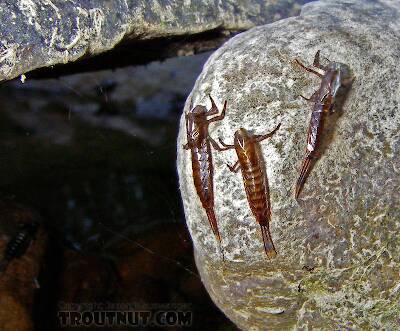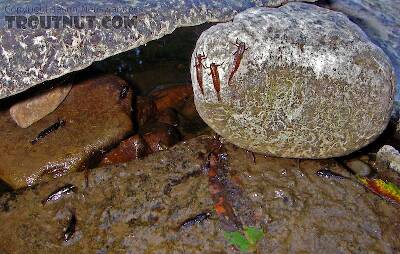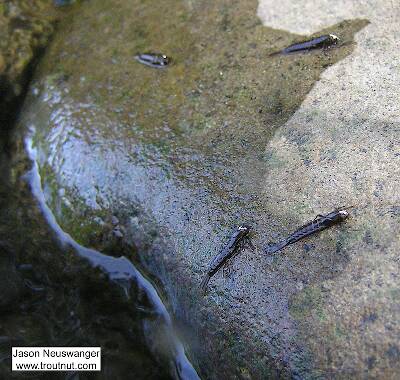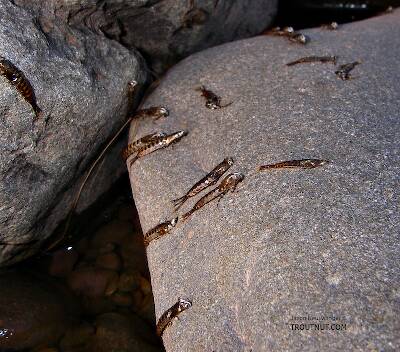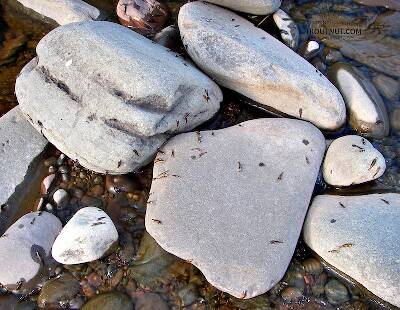
Blue-winged Olives
Baetis
Tiny Baetis mayflies are perhaps the most commonly encountered and imitated by anglers on all American trout streams due to their great abundance, widespread distribution, and trout-friendly emergence habits.
Featured on the forum

This wild-looking little thing completely puzzled me. At first I was thinking beetle or month larva, until I got a look at the pictures on the computer screen. I made a couple of incorrect guesses before entomologist Greg Courtney pointed me in the right direction with Psychodidae. He suggested a possible genus of Thornburghiella, but could not rule out some other members of the tribe Pericomini.

Troutnut is a project started in 2003 by salmonid ecologist Jason "Troutnut" Neuswanger to help anglers and
fly tyers unabashedly embrace the entomological side of the sport. Learn more about Troutnut or
support the project for an enhanced experience here.
Mayfly Family Isonychiidae (Slate Drakes)
See Isonychia for details. It is the only North American genus in this family.
Family Range
Identification
To determine whether a specimen of Ephemeroptera belongs to Isonychiidae, use the Key to Families of Mayfly Nymphs or Key to Families of Mayfly Duns and Spinners.
Specimens of the Mayfly Family Isonychiidae
5 Female Duns
1 Male Spinner
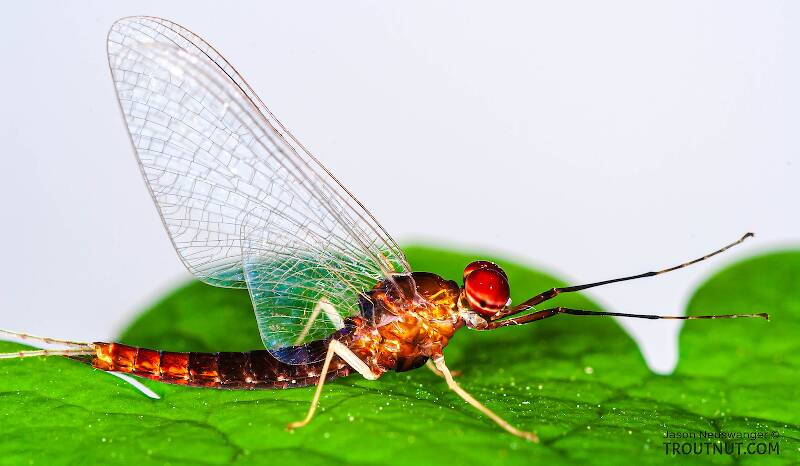
I got several really nice pictures of this spinner. I also collected a female on the same trip.
2 Female Spinners
13 Nymphs
5 Streamside Pictures of Isonychiidae Mayflies:
Discussions of Isonychiidae
Isonichya Bicolor
21 replies
Posted by CraigK on Mar 26, 2012
Last reply on Mar 29, 2012 by Entoman
I think the Iso. b. female was referred to a generation or so ago as the white gloved howdy. I love those old names. Too bad there are no pics of Potamanthus (golden drake). They may be extinct (siltation and acid rain?)...talked with Charlie Meck about that a few years ago. A beautiful mayfly...an important hatch of years past. I couldn't find any ref. to Epherons. An important hatch for me in about any area of the country. This my first post...love the site...very nice photog. Lets see what the strange weather of the year does to the hatches and fishing for this year. Overall, I expect it can't be good. CK
Are Isonychia mayflies technically multibrooded?
4 replies
Last reply on Apr 17, 2009 by GONZO
Here's what I've written in my article on Isonychia about their hatching:
I'm curious if they can really be called multibrooded or not, since they don't produce more than one generation per year (as far as I know). They simply have distinct populations within the same generation which emerge at different times during the year. Does that count?
All my books are packed up in boxes right now so I don't have a technical definition of the term handy.
Some Isonychia species are multibrooded, but not in the same way as most other multibrooded mayflies like the Baetidae. In those species, the flies emerging in midsummer or Fall are the offspring of the earlier hatch from the same year. In Isonychia, the Fall emergers are offspring from the previous Fall. They are present as half-grown nymphs when the first of their generation emerge. Although Isonychia broods have distinct peaks, some may be found on the water at any time in between.
I'm curious if they can really be called multibrooded or not, since they don't produce more than one generation per year (as far as I know). They simply have distinct populations within the same generation which emerge at different times during the year. Does that count?
All my books are packed up in boxes right now so I don't have a technical definition of the term handy.
Penns Creek Slate Draker's
4 replies
Last reply on Sep 23, 2007 by Shawnny3
Penns is one of the few places where a #10 iso will nail em' all year long
Iso
1 replies
Posted by JMV on Sep 21, 2006 in the species Isonychia bicolor
Last reply on Sep 21, 2006 by Troutnut
Great site, I'm an Iso. fanatic... JM
Start a Discussion of Isonychiidae
Mayfly Family Isonychiidae (Slate Drakes)
Taxonomy
Genus in Isonychiidae
IsonychiaLeadwings
21
117
Genus in Isonychiidae: Isonychia


